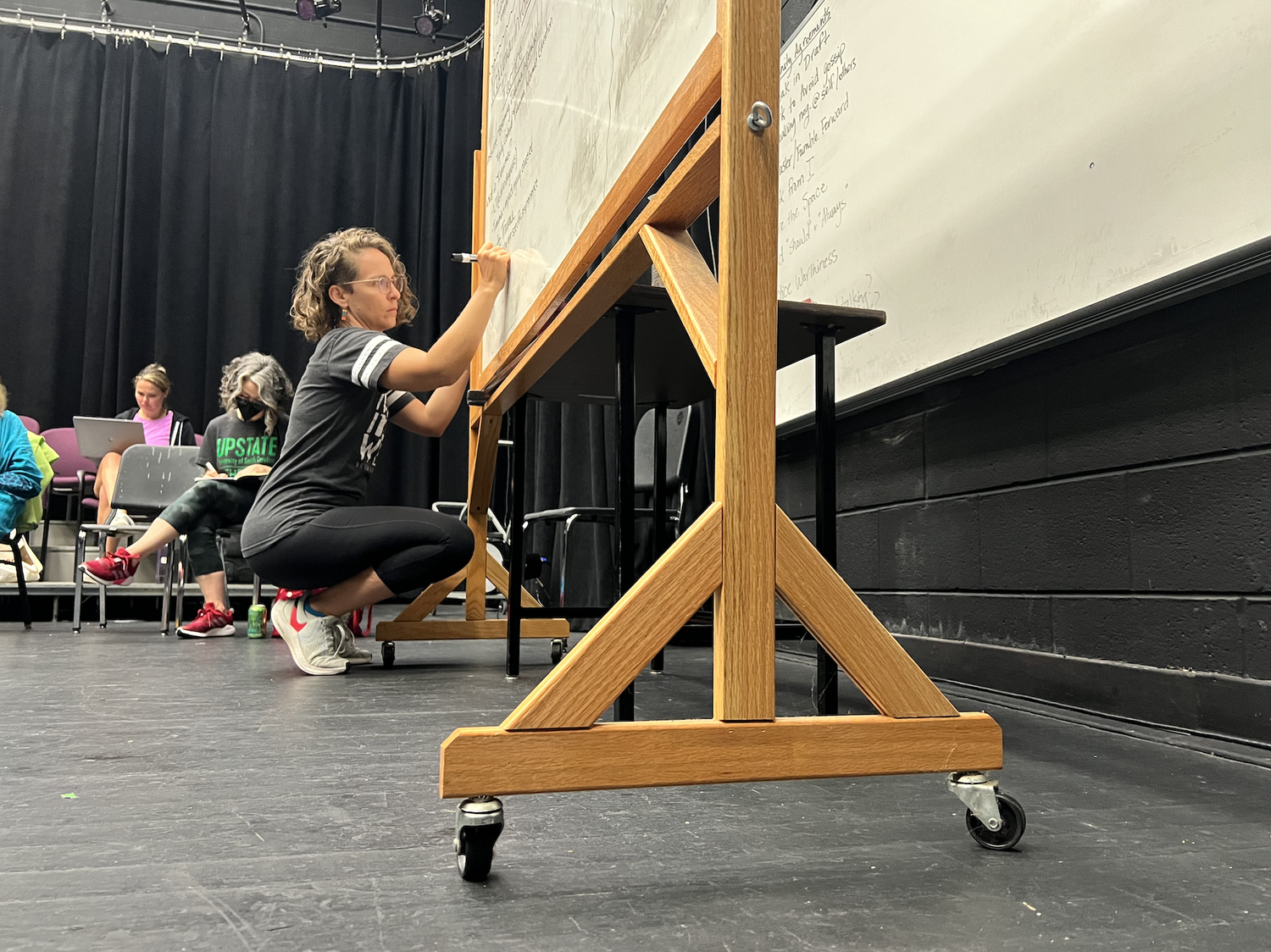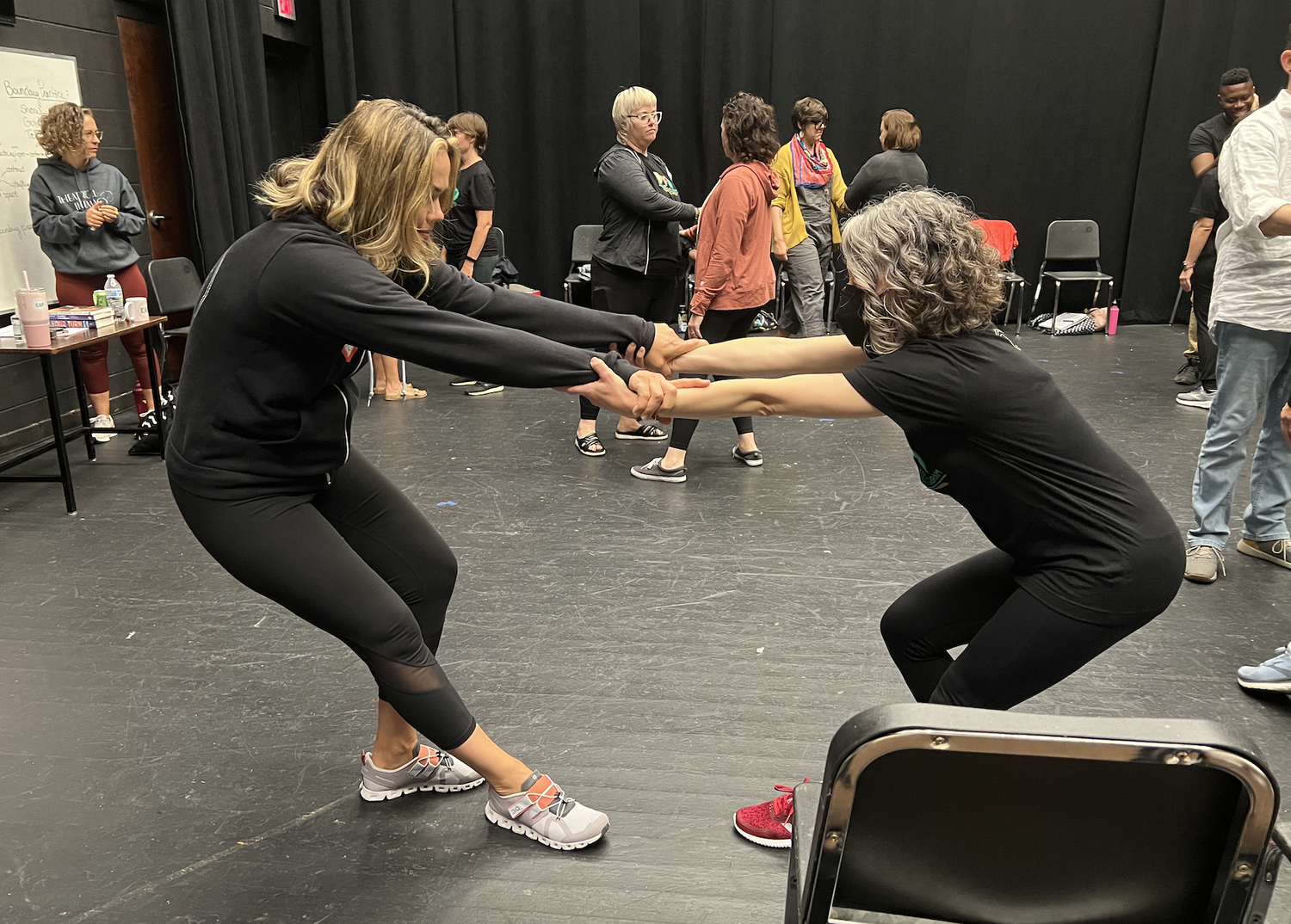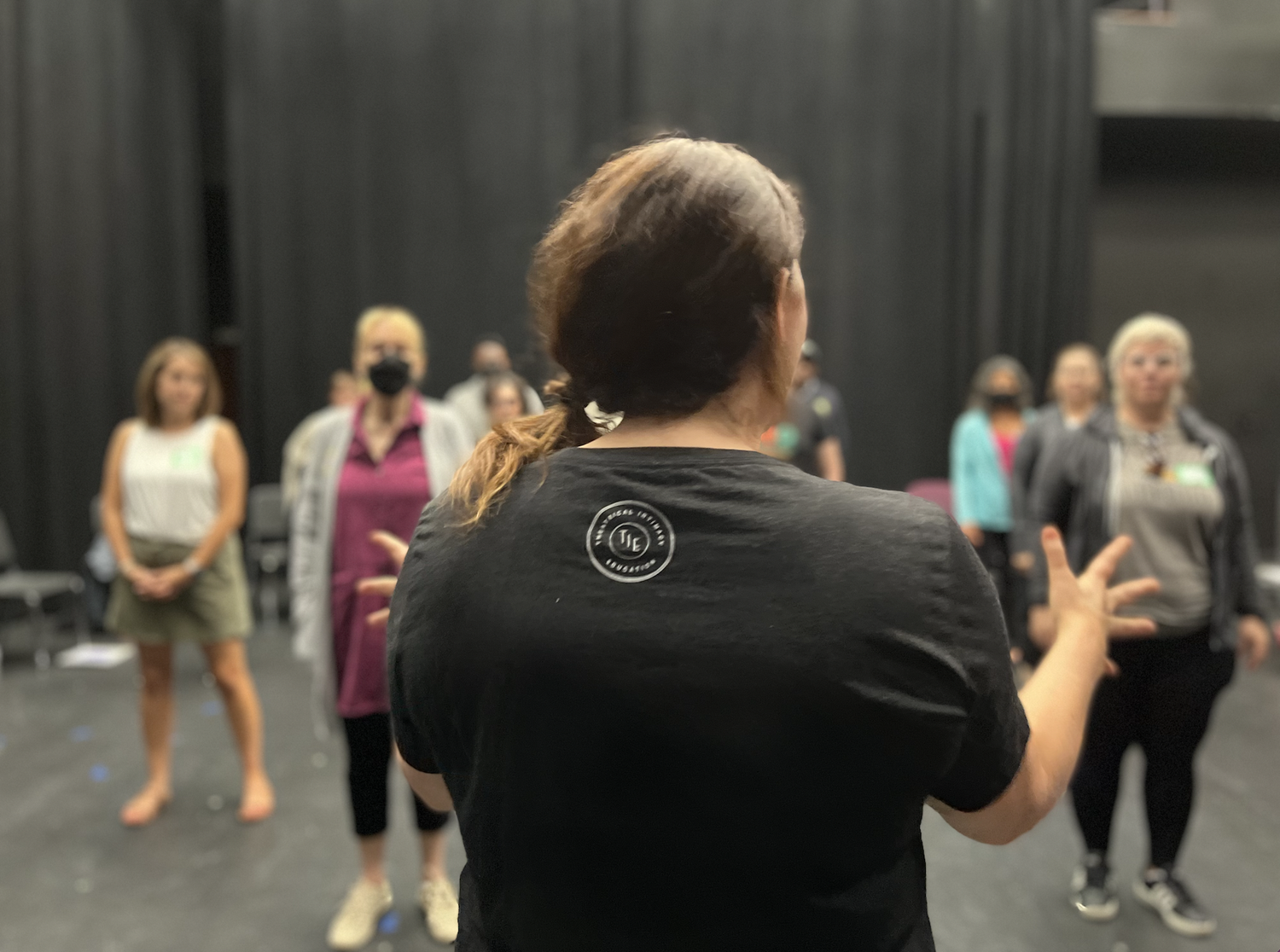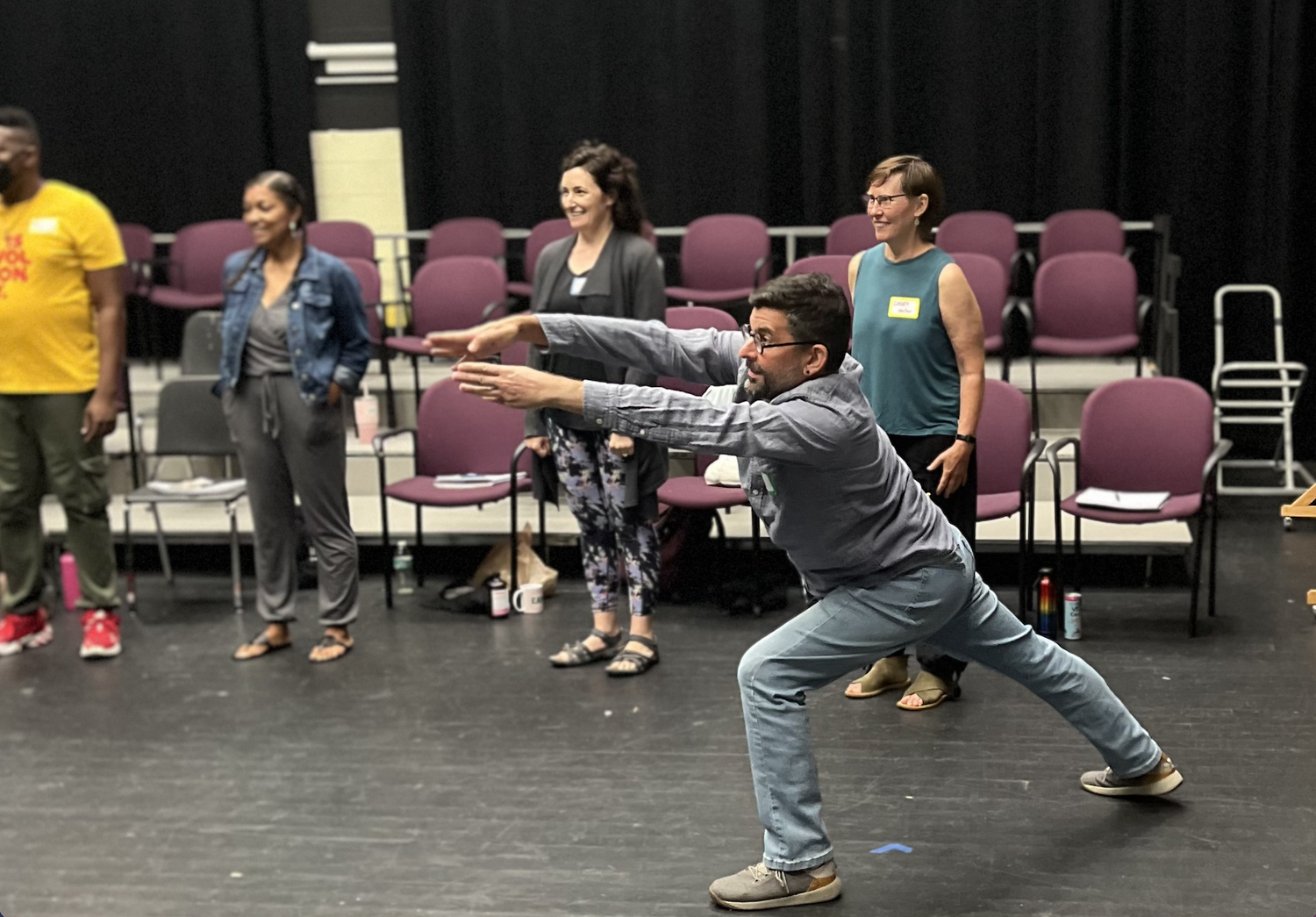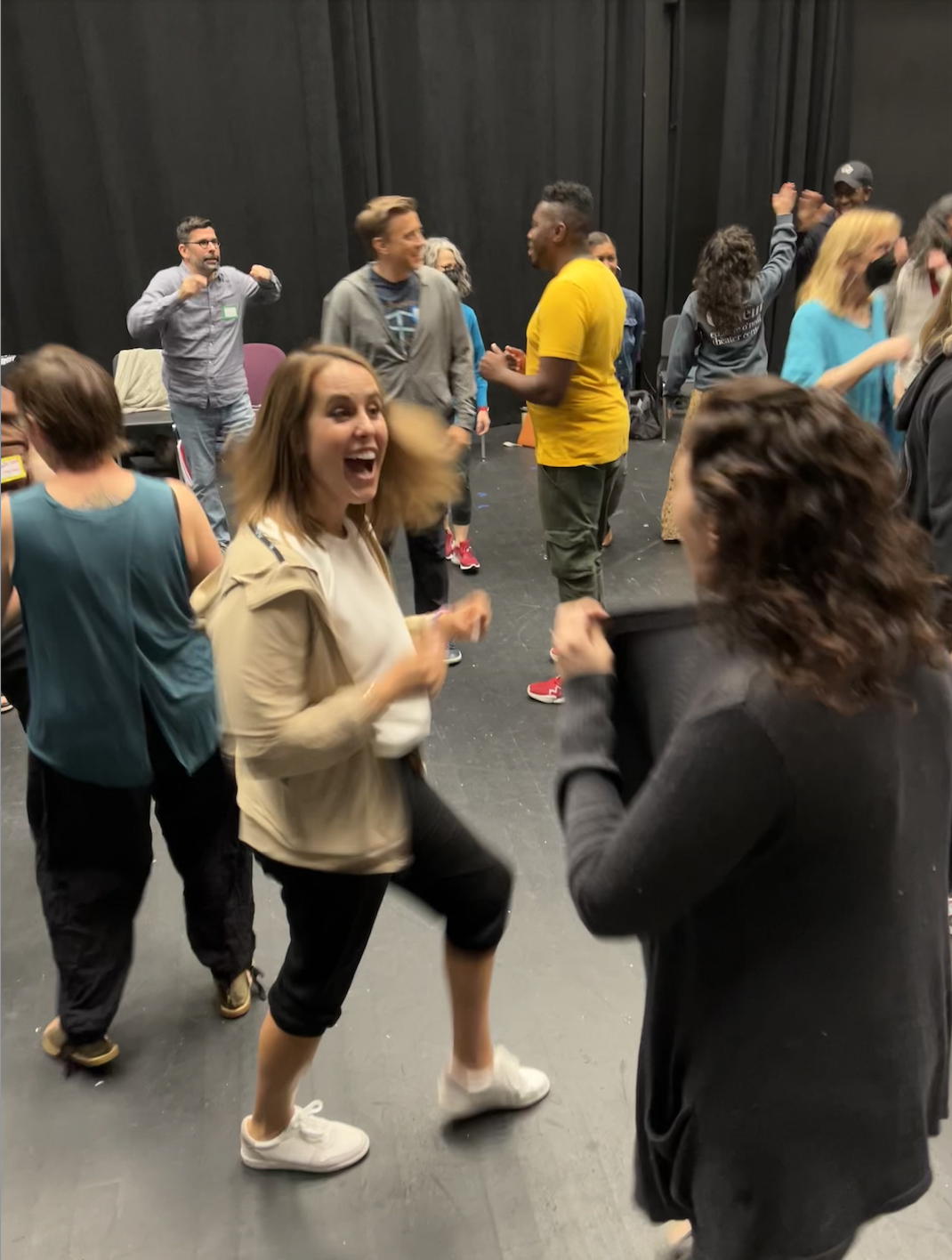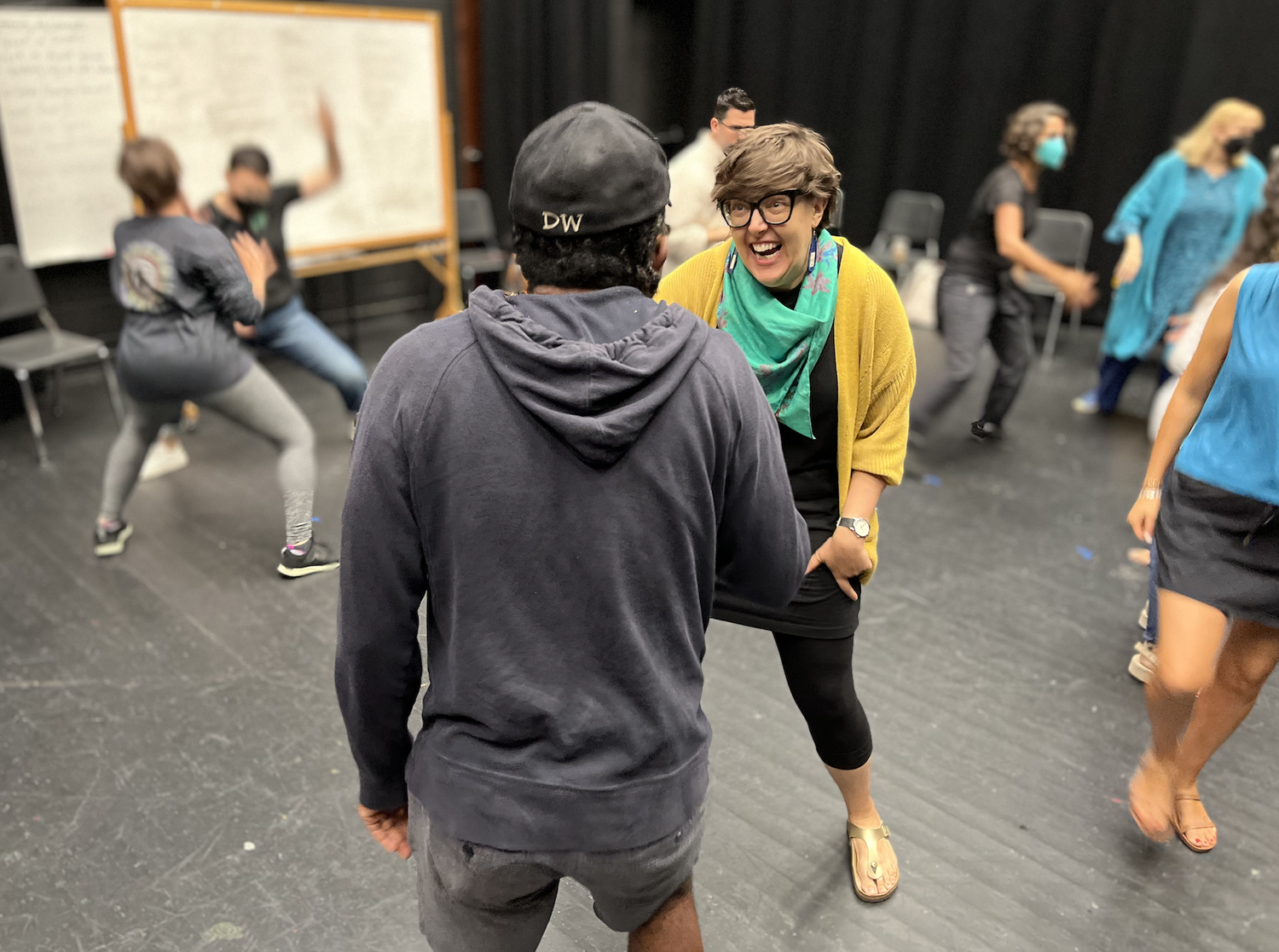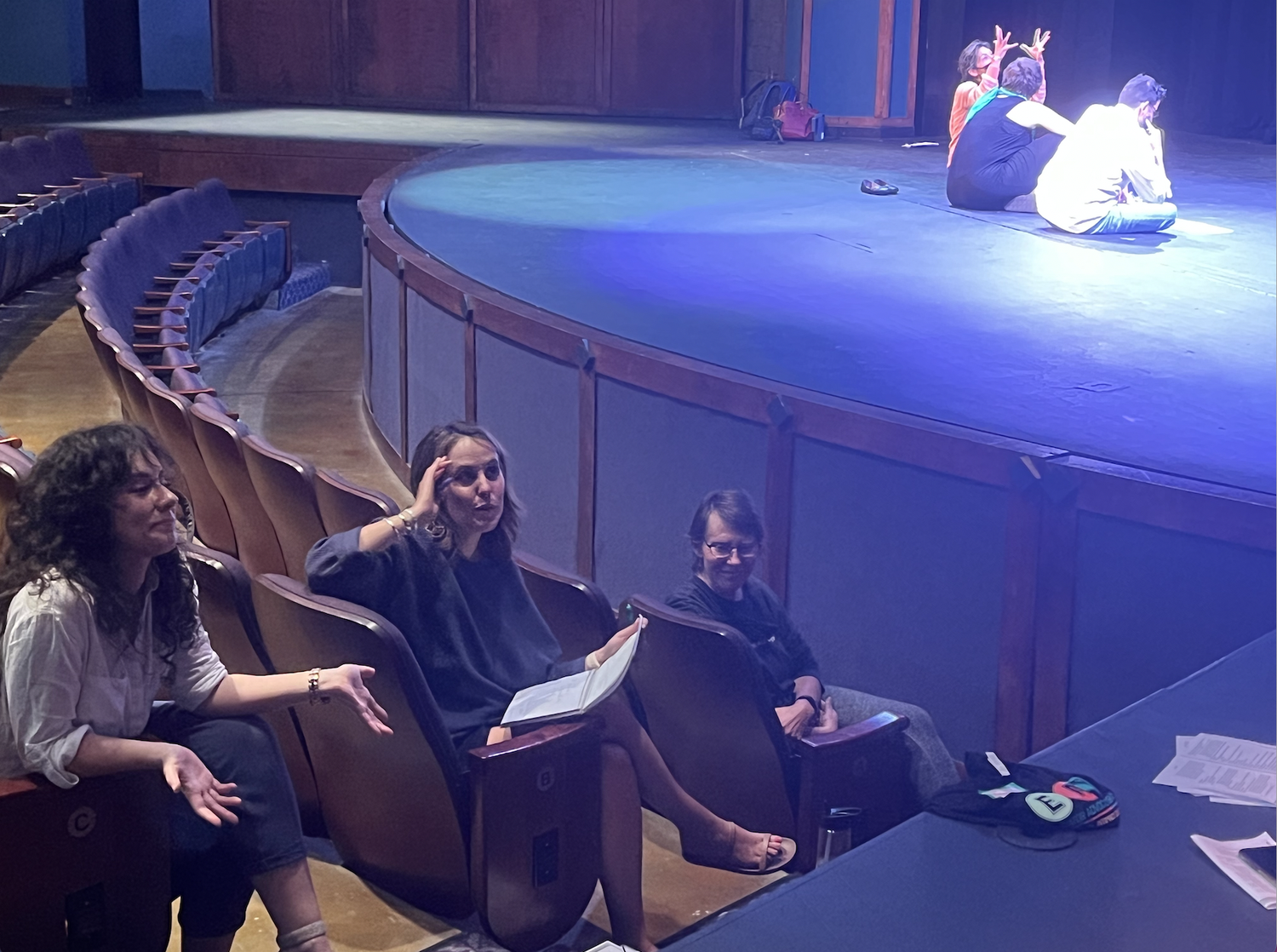Welcome to Intimacy Camp: The EAP
For the past week, I was able to gather with some of my favorite Theatrical Intimacy Education colleagues, in person rather than online, for the first time in several years. This alone would have been invigorating! But we were joined by nearly 25 faculty from higher education theatre departments across the United States for an entire week of theatrical workshops and activities, cognitive development and pedagogy research, and experimentation in staging intimacy.
This was the first annual Educator Advocate Program, hosted by the University of South Carolina Upstate.
I flew in early, because getting to the east coast from California is a whole ordeal that I’ve yet to get used to. Laura Rikard, co-founder of TIE and one of my favorite humans, welcomed me into her home, where we spent a day enjoying time with her twins before heading to South Carolina.
The TIE team gathered in an incredible Airbnb, to collectively celebrate being in one anothers’ presence and to gather our thoughts before launching into a long week of deep dives into research, artistic practice, policy, and pedagogy.
We began the week, as one should, with introductions and community agreements. And almost immediately, I felt the weight of everyone in the room’s impressive highway-length resumes overwhelming. If it weren’t for the welcoming atmosphere and here-to-learn attitudes in the room, I might have been downright intimidated.
But we laughed. We shared our points of origin and areas in which we were hoping for growth. And we were able to see each other as humans.
We discussed consent and best practices; we played the go circle, engaged in vulnerability practice and boundary setting, and jammed out during the open-ended question party.
Everyone shared their hopes for intimacy and consent-based work in the theatre, and folks illustrated their past struggles with implementing this type of work in their own departments.
I realized that I’m not alone.
We discussed working with minors and introduced everyone to the different tools of the trade; we learned about the implications of race and culture on our attempts to create consent-based spaces from Joy Vandervort-Cobb, and about consent and anti-racism in design processes. We became bystander intervention certified. We learned about Mental Health First Aid.
The participants began to experiment with choreographing intimacy, working with student-actors from USC Upstate. They asked for help, both from us—members of the TIE team—and from the undergraduate performers with whom they were working.
I realized that we all learn best when we are open to learning from one another.
As the week drew to a sad conclusion—we all wanted to stay and continue to play—we promised one another that we would remain in contact as a learning and teaching artistic community.
And I thought back to the friends I made in summer camp, where I discovered who I was as a human, and I realized that the EAP is just that, but for artist-educators. And just like camp as a kid, I felt that these bonds, with new friends from afar, were stronger than those I forged throughout the year with others in close proximity.
I realized that academia as we’ve inherited it is lonely, but it doesn’t need to be.

